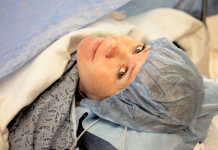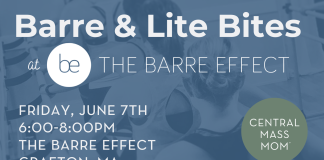 It wasn’t until after my first baby was born that I heard of a ‘physiologic birth’. I came to understand this birth process through hypnobirthing. It seems to me that education for women about the natural process of physiologic birth is quite lacking. The more advancements we make in technology, the farther we get from trusting what our bodies are made to do all on their own, without any interventions. This made all of the difference in how I approached my second birthing experience. Once I understood what physiologic birth meant, I was able to make choices that supported the type of natural birth that I desired.
It wasn’t until after my first baby was born that I heard of a ‘physiologic birth’. I came to understand this birth process through hypnobirthing. It seems to me that education for women about the natural process of physiologic birth is quite lacking. The more advancements we make in technology, the farther we get from trusting what our bodies are made to do all on their own, without any interventions. This made all of the difference in how I approached my second birthing experience. Once I understood what physiologic birth meant, I was able to make choices that supported the type of natural birth that I desired.
A physiologic birth and labor are both powered by the natural human capacity of the woman and baby.
Research shows that physiologic birth is more likely to be safe and healthy because there is no unnecessary intervention that disrupts normal physiologic processes. Of course, there are exceptions to everything, and sometimes medical interventions for mom and/or baby are absolutely necessary and life-saving. Nonetheless, supporting normal physiologic birth, even when complications are present, has the potential to enhance the best outcomes for both the mother and baby.
Normal physiologic childbirth is characterized by the natural onset and progression of labor.
It encompasses all conditions (mental, emotional, physical, etc) that promote effective labor and that result in the vaginal birth of the baby and the placenta. Physiologic birth emphasizes the importance of skin-to-skin contact, keeping momma and baby together during the postpartum period, and early initiation of breastfeeding.
My second labor, like my first, was in a hospital setting. I knew going into it that a sterile hospital environment was not ideal for this kind of birth. The bright lights, the timelines, and the policies all felt like a challenge. Consequently, I made sure to advocate early and often for all of my birth preferences that would support a physiologic birth in the hospital setting.
Below are a few key elements to support a natural birth that I used:
Spontaneous start to labor
My preference was to use natural means before moving to any medical or pharmacological augmentation of labor. Of course, hospitals have certain timelines they like to work within. As an alternative to drugs like synthetic oxytocin (Pitocin as many of us know it), my midwife suggested that I use a breast pump to possibly speed up labor after it had stalled (which also is a completely normal part of labor). This worked incredibly well after a short amount of time!
Create a safe and supportive environment
Imagine being intimate in a brightly lit room with strangers coming in and out. Not exactly the most conducive environment for creating a felt sense of safety in your body, right? It’s the same in labor. Your body has its own internal surveillance system called neuroception that is always scanning for cues of threat and safety. Bright lights, a cold room, lack of privacy, and multiple providers all disrupt the natural flow of labor. Ask to dim the lights. Bring battery-operated candles or string lights to set the vibe. Use essential oils that help you feel calm and grounded. Make a playlist ahead of time to listen to while in labor. Request no medical students enter the room while you’re laboring. Feel empowered to make choices that support your sense of safety.
Mother-directed birthing and freedom of movement
This time around, I understood that my body would naturally push on its own when it was ready. Physiologic birth encourages spontaneous pushing in positions other than lying on your back. With my first, I was laboring in the bed laying down the entire time. The second time around I was not in that position once. I asked to prioritize freedom of movement and requested that no midwife or doctor tell me when to push. A hospital johnny felt restricting and held the association of being a sick hospital patient. I insisted on wearing what I wanted to wear while laboring. Being in shorts and a sports bra helped me feel more comfortable moving about the room as I desired.
Any situation in which the mother feels threatened or unsupported will disrupt a normal, physiologic birth process.
While these items helped me to feel safe, it’s important to check in with what would help you to feel safe if you desire a physiologic birth. So often we outsource our health and assume that others know better than we do about our own bodies. It is possible to develop a deep trust that you were created to birth a baby independent of any medical intervention.










